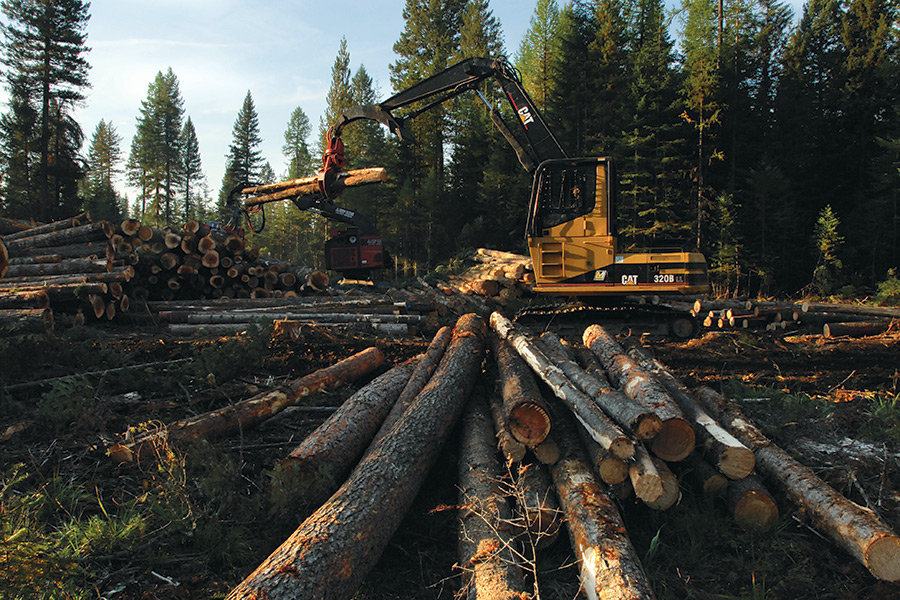Local timber executives are generally supportive of the initial targets for logging that are proposed in the U.S. Forest Service’s revised management plan for the Flathead National Forest, while environmental groups are criticizing the agency’s increased levels.
The agency earlier this month released a proposed revision of the Flathead National Forest Land and Resource Management Plan, or forest plan. The current plan has not been formally revised since 1986 and this latest edition will guide management decisions for 15 years after it is officially adopted. The plan is open to public comment through May 5.
Among the forest-wide changes proposed in this latest edition, the agency has identified 637,419 acres of land in the Flathead National Forest that are suitable for timber production. That number has fluctuated over the last 30 years based on new analyses and court decisions. The 1986 plan initially targeted 707,000 acres but that dropped to 670,670 acres under the eventual record of decision. When the revision process restarted a decade ago, the agency reduced its target amount to 328,328 acres of suitable timber but that figure was modified once again and rose to 528,044 acres, according to the Forest Service, before the revision process was halted in spring 2007 due to national litigation.
The agency arrived at its latest proposal by establishing standards and conditions to guide timber output, including: “Timber shall not be harvested on lands where soil, slope or other watershed conditions may be irreversibly damaged,” “Timber harvest activities shall only be used when there is reasonable assurance of restocking within 5 years after final regeneration harvest,” and “Harvesting systems shall not be selected based solely on their ability to provide the greatest dollar return.”
The proposed plan calls for 28 million board feet of timber harvested each year, which would be the equivalent needed for roughly 1,750 homes.
The target amounts in the 2015 plan were based on the Flathead National Forest’s average budget levels over the past three years.
Paul McKenzie, lands and resource manager at F.H. Stoltze Land & Lumber in Columbia Falls, said he is encouraged by the initial timber objectives in the forest plan, although the company continues to review the finer details and plans to submit comments.
“What we don’t want to have happen is for the forest plan to be yet another barrier for them. It should enable them to do their job,” McKenzie said. “I think they’ve been working pretty hard to do that.”
McKenzie does strongly disagree with the agency basing its figures on budgetary levels. He said the agency should properly calculate the sustainable yield limit and determine what the maximum amount of suitable timber is instead of creating figures based on funding levels.
“The plan should say what the land needs,” he said.
Arlene Montgomery, program director of Friends of the Wild Swan, similarly criticized the Forest Service for how it arrives at target harvest levels. She panned U.S. Forest Service Chief Tom Tidwell last week saying logging in Montana could be tripled over current levels. Tidwell was responding to questions by Montana Sens. Steve Daines and Jon Tester, who were pushing for increases in timber production for saw mills.
“I don’t see where he has any basis in fact,” Montgomery said of Tidwell. “How can he just off the top of his head say we can harvest all of this without looking at the environmental impacts? That’s what the National Environmental Policy Act is all about. You can’t say just because we have a lot of trees we can cut them down.”
Montgomery said she had not had a chance to properly review the entire forest plan, but she fears the agency is trying to return to the logging heydays of the 1980s.
Tom Ray, vice president of Northwest resources and manufacturing for Plum Creek, said he believe the proposed levels of suitable timber in the latest forest plan do balance the needs of wildlife, recreation and forest management. He did say the amount of board feet should be closer to 48 million annually, though.
“We think, on a biological basis, there’s an opportunity to see more management,” he said. “With the number of acres of dying and diseased timber, there’s an opportunity to make this a win-win.”
Last week Plum Creek announced it was planning to invest roughly $10 million in its Northwest Montana facilities through improvements. The Columbia Falls medium-density fiberboard plant will receive roughly $6 million in upgrades. It’s the company’s largest investment in local infrastructure in over a decade, Ray said.
